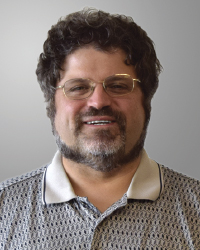 For biomedical researchers working with cell culture, an accurate, real-time reading of progression and confluency (density) in cell populations is their ultimate objective. The information gleaned from imaging these samples is valuable in understanding cell proliferation and functionality at its most fundamental stages as well as tracking specific therapeutics in the tissue of patients. If changes in cell migration and interaction are not closely monitored over time in the laboratory, the sample may become useless.
For biomedical researchers working with cell culture, an accurate, real-time reading of progression and confluency (density) in cell populations is their ultimate objective. The information gleaned from imaging these samples is valuable in understanding cell proliferation and functionality at its most fundamental stages as well as tracking specific therapeutics in the tissue of patients. If changes in cell migration and interaction are not closely monitored over time in the laboratory, the sample may become useless.
Live cell imaging is comprised of technologies such as widefield, superresolution, and time-lapse microscopies. Each technique isolates specific activity and behavior at the cellular level. The proliferation of regenerative medicine and gene therapies has created commercial demand for this capability. The needs of biopharma have been a significant driver behind key live cell research at the academic and industrial levels.
Jonathan Garlick, a professor of diagnostic sciences at Tufts University School of Dental Medicine, knows this reality well. He observes biopsy samples from skin fibroblasts and other tissue and faces the dual challenges of working on samples with incredible heterogeneity, with an expectation of reproducibility of results from those tests — particularly those in which a specific treatment is being explored. The key, he noted, is to achieve proper confluency, which allows cell populations to maintain the optimal stage for analysis without multiplying to the point of changing their active functioning. And while most labs have protocols for how to secure and maintain samples, modern time-lapse techniques can capture details at crucial stages of morphogenesis, showing specifically where and when changes, such as protein aggregation, are occurring.
At any time, a lab can have dozens of cell cultures growing, and keeping them in a stable environment while also accommodating the prying eyes of countless technicians and students coming and going requires robust systems and components. As I explain in our cover story here, imaging systems with specialized illumination mechanisms, in conjunction with AI software for data collection and interpretation, allow for careful monitoring of cellular targets contained within incubators. This setup enables cellular multiplication and diversification to be contained in one place, without the tedious and problematic transfer that typically occurs when a sample is removed from a receptacle and placed on a microscope slide for examination.
This capability is increasingly important when the direction of modern biomedical research is considered. Scientists around the world are continuously growing cancer cells, as well as other types of cells, to gain clues as to how they grow and affect surrounding cell groups. And in the case of Garlick’s lab, patient tissue can be grown and studied to develop individualized therapies. Advanced live cell imaging techniques are thus poised both to personalize medical treatment based on specific conditions and to teach scientists even more about biological functioning at the earliest stages of an organism’s existence.
Enjoy the issue!
Douglas J. Farmer
